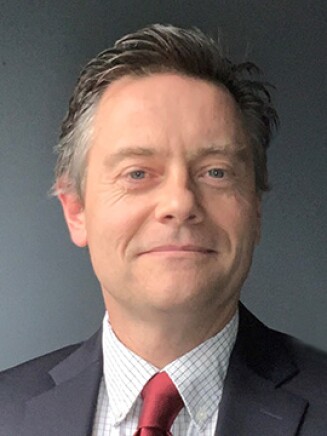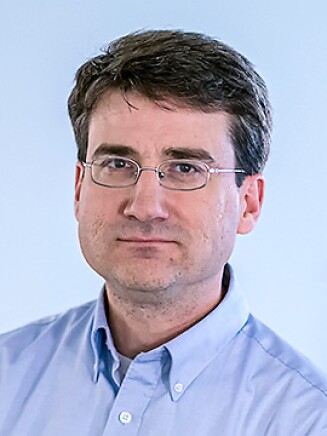It’s a sobering fact: More people in the United States die from lung cancer than any other type of cancer.
Lung cancer is often diagnosed at a late stage, after the disease has metastasized—in other words, spread to other parts of the body. At this advanced phase, therapies aren’t considered to be a cure, and the goal is to extend patients’ lives and quality of life as much as possible.
This is particularly true in the case of non-small cell lung cancer (NSCLC), which accounts for around 85% of lung cancer cases. There are several types of NSCLC, and patients typically have a poor prognosis: for NSCLC with epidermal growth factor receptor (EGFR) mutations, the five-year survival rate is less than 20%.
Initially, chemotherapy was the only treatment available. It provided short-lived anti-tumor activity and was significantly toxic. Over time, other types of treatments called tyrosine kinase inhibitors (TKIs) were found to improve patients’ lives and quality of life, but tumors developed resistance to these TKIs and patients had few options left.
It’s patients like these that spurred researchers at the Janssen Pharmaceutical Companies of Johnson & Johnson nearly 10 years ago to try and find an effective drug for EGFR mutant NSCLC. The team elected for a novel approach: a bispecific antibody, which is a recombinant protein that can bind to two different antigens (substances that provoke an immune response in the body) that would target the disease.
It wasn’t an easy road—studies were delayed, the science was complex and the COVID-19 pandemic brought in-person work to a grinding halt. But now that the treatment has been approved by the U.S. Food and Drug Administration (FDA), the team can proudly say their work and commitment have paid off.
“This is an exceptionally talented and dedicated team of drug developers,” says Amy Roshak, Vice President, Development and Oncology Portfolio and Lung Cancer Compound Development Team Leader at Janssen Research & Development, LLC. “Their drive and commitment were endless. It’s really a privilege to work beside this team every day.”
We caught up with four scientists who were integral to the development of a treatment for NSCLC to learn exactly what it took.
“Pursuing this treatment is the kind of experience that made me think: This is what I got into science for.”
While she was excited by the drug’s potential, Dr. Moores knew to be cautious.
“You have to have a lot of optimism and grit when you work in drug discovery,” Dr. Moores says. “So many molecules seem promising in preclinical studies but fail for one reason or another in clinical trials.”
That grit came in handy later that year, when Janssen R&D had to put further studies of the molecule on hold after numerous other NMEs were declared at the company and priorities were reallocated. Though she was disappointed, Dr. Moores was determined to find a way to keep the drug moving forward.
“The drug had so much potential that we refused to give up on it,” she says.
Dr. Moores and her team decided that they would continue preclinical studies themselves the following year, hoping to increase the data package that would support testing the molecule in clinical trials.
Thanks to their extra effort, the molecule was handed to the WAVE program, an early development unit at Janssen R&D that can run small clinical trials.
To see the drug attain FDA approval this month has been particularly special for Dr. Moores.
“This is the first drug I’ve worked on that made it all the way to approval,” she says. “I always wanted to have an impact on patients’ lives, so the experience has been so rewarding.”

“This drug isn’t just about survival—it can potentially help patients get parts of their lives back.”
“Why would this bispecific antibody work so well when other EGFR antibodies that also had compelling data failed in this disease?” he thought at the time.
Dr. Haddish-Berhane joined the effort in late 2016, after the drug had shown promising results in clinical trials in South Korea. His team was tasked with determining the optimal dose. Unlike chemotherapy, this drug is a targeted treatment, which requires multiple strategies for determining the optimal dose, making the process more challenging.
“The drug was showing promising activity, but as we began enrolling more patients, we quickly needed to identify a dose that delivered the most benefits with the fewest side effects,” Dr. Haddish-Berhane says.
He credits the recent FDA approval to the tireless efforts of his fellow scientists and the urgency they felt to deliver a targeted treatment to a group of patients who had so few options.
Dr. Haddish-Berhane says his passion for his job comes from knowing how many people have lost loved ones to cancer. “I recently buried a beloved sister who lost the battle to gastric cancer,” he says. “Such loss intensifies my passion to find, cure or even eradicate cancer.”
It’s a passion that has been ignited on the long road to developing this treatment. “Every time I see the scans from patients with tumor reductions, every time I hear the patient testimonials from the investigators involved in the clinical studies ... those are the moments that make me realize what an important job this is.”

“This was a challenging molecule to work on, but the strength of a large company like Johnson & Johnson helped us get over hurdles.”
This was in 2017, when the drug exited the WAVE program and returned to the Janssen Oncology team—the first drug ever to make the transition from WAVE to full-scale development midstream. This meant that scientists could expand the trials to include more patients in more locations.
It was Dr. Meacle who, with his team, would identify how the drug should be manufactured. While they had been able to produce a small amount of the drug for patients in earlier trials, ramping up manufacturing was daunting.
“These molecules, which are called bispecific antibodies, are much harder to make than Janssen’s current antibodies products,” he says. “It requires twice the amount of work, since two regular antibodies must be manufactured first and then combined together using a novel process to produce one bispecific antibody.”
But the long hours they put in paid off. Thanks to Dr. Meacle and his team’s efforts, clinical trials were able to expand from two sites in South Korea to 80 sites in 11 countries. More than 800 patients would be enrolled in the trials—a huge jump from the initial target enrollment of 40 to 50 patients.
“To finally have a targeted treatment that can potentially help these patients has been very satisfying,” says Dr. Meacle.

“I believe we’re just seeing the beginning of what this drug can potentially do.”
“The ability of the team to collect and deliver data from the studies when they couldn’t even meet in person and when hospitals were under pressure was incredible,” says Dr. Knoblauch, who, as clinical leader, has overseen the development of the drug starting with the Phase 1 study.
And the work hasn’t ended yet. Janssen has submitted applications for approval of the drug in Europe, and global submissions are underway. The company is also studying it as part of a combination therapy.
Dr. Knoblauch is hopeful that the drug will prove to be an effective treatment for other types of cancer, as well.
“There are several other types of tumors we can explore where one of the same genes that our bispecific binds to is overexpressed,” he says. “I’m looking forward to seeing if there is potential for this drug to help patients with other types of cancers, too.”





